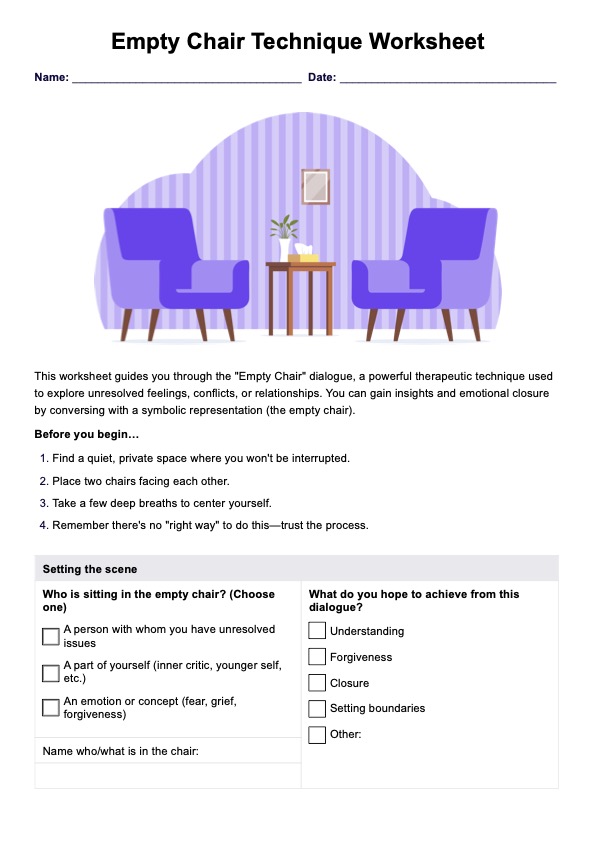The Empty Chair Technique Worksheet is a structured tool from Gestalt therapy that guides individuals through a transformative dialogue with an imagined entity using an empty chair.

Empty Chair Technique Worksheet
Download our Empty Chair Technique Worksheet PDF to guide clients through self-reflection and conflict resolution.
Use Template
Empty Chair Technique Worksheet Template
Commonly asked questions
The worksheet provides steps for engaging in the Empty Chair Technique, fostering self-reflection and insight by externalizing internal conflicts or unresolved emotions.
The worksheet aids in structured exploration, fostering self-awareness, and serving as a record-keeping tool for personal growth.
EHR and practice management software
Get started for free
*No credit card required
Free
$0/usd
Unlimited clients
Telehealth
1GB of storage
Client portal text
Automated billing and online payments











